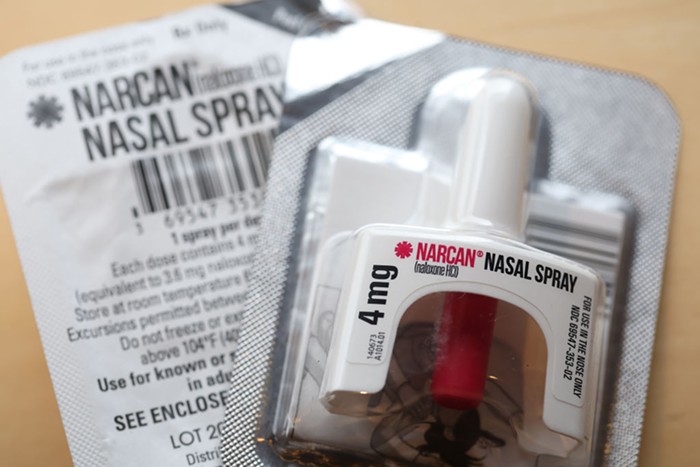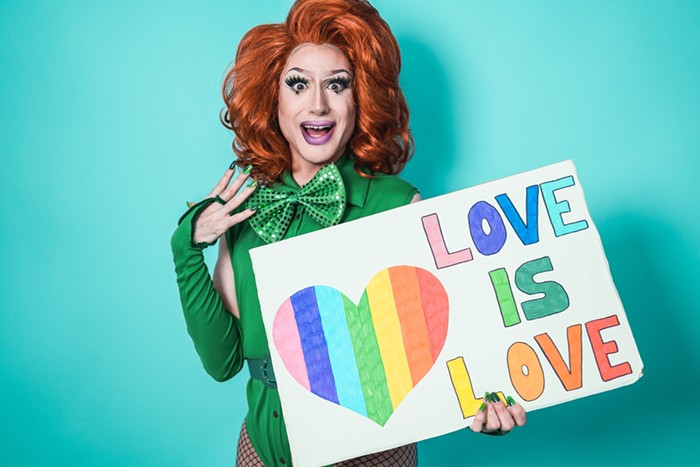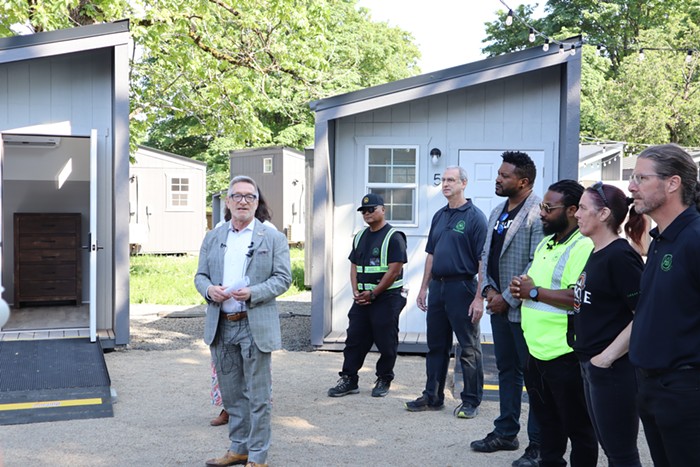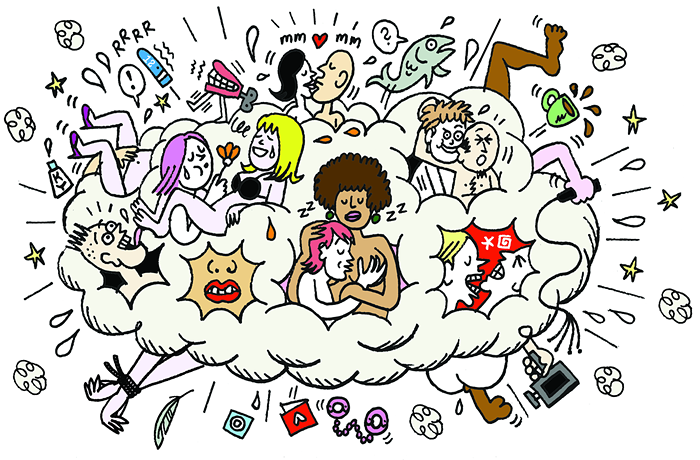Donut Shop II
116 NE Russell, 528-1919
Through Dec 17
Cris Moss has set up his second "Donut Shop" on the newly invigorated NE Russell Street. Upstairs from the Russell Street Theatre, Moss acquired space for the exhibit's 17-day run. Participants include Moss himself, Jeremy Bittermann, Valerie Collins, Ted Gibson, Cathy McClure, and John Torreano. The group offers a healthy spread of video, installation, and photographic work. While there is not a stated theme for "Donut Shop II," all the work converges on one principle--it hovers outside the Portland mainstream.
In the main room of the exhibit, the south wall has been transformed by artist John Torreano, who offers an illusion of the night sky. A painted cobalt-blue surface is topped with an array of white plastic hemispheres. Formally, the pattern and texture created by Torreano provokes comparisons to blue sponge paintings by Yves Klein and the work of local artist Brendan Clenaghen. However, Torreano breaks out of the cookie cutter with the use of lighting. The wall composition is lit from below, casting dramatic, flame-shaped shadows. Torreano's illusion begins to take shape through the shadows as they point inward, creating the effect of depth.
While the piece is interesting, it has the potential for greater resonance. The wall that Torreano chose to transform has some inherent problems that disrupt the desired illusion. The wall is not smooth; the age of the building surfaces from underneath the blue paint. An electrical socket in the middle of the wall becomes an element. Two windows within the starscape boldly interrupt any viewing reverie, reminding the viewer of the real world outside.
Portland photographer Jeremy Bittermann contributes four large color photographs to the exhibit, each a cropped image of models in formal attire. At first glance, the work seems rooted in fashion photography. Bitterman's attention to color saturation and detail produces magazine-ready imagery.
Upon closer examination however, Bitterman offers clues for the viewer to grasp the unique nature of the work. In one piece, the frame is filled with the upper torso of a man donning a mustard-colored oxford shirt and a complementary tie. The formal glossiness of the image is dispelled when the viewer realizes that the crisp, fashionable shirt has a torn pocket. Bittermann is trying to sell us an image, betting on the fact that most folks won't notice any flaws.
The exhibit's roster includes the talents of recent PNCA graduate Valerie Collins. She has adopted a small room, filling the space with video projection, sound and a multi-media sculpture. In the sculptural piece Collins has constructed a small vanity, complete with beauty accessories. A curling iron, brush, compact, etc., are all painted a thick, matte white. The vanity mirror doubles as a viewing screen. Collins placed a thin monitor on top of the vanity, offering a loop of women performing their beauty rituals.
On an adjacent wall, Collins projects a simple image. She places the camera within a darkened space (presumably a box), that is slowly cut into. As light gradually pours into the frame, a hand begins to rip and tear away the box. The projection and the sculptural element combine to form a politicized statement. While it is true that viewers have been inundated with work that confronts canons of beauty, Collins steers away from being trite. Instead the piece quietly and thoughtfully presents imagery for the viewer to contemplate.












